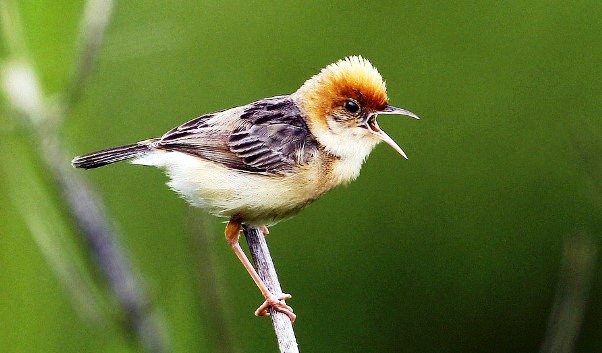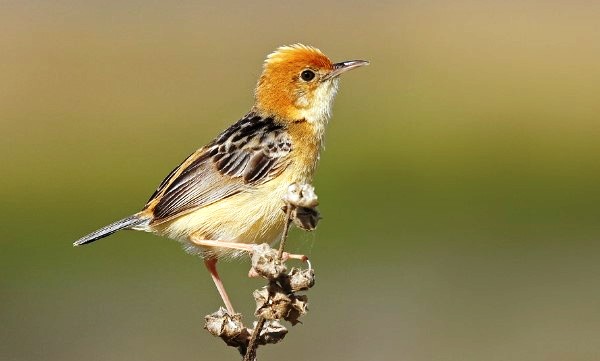The stunning golden-headed cisticola (Cisticola exilis) inhabits taller, swampier grassland than Zitting. It is typically found near fresh water and is more widespread in northern and eastern Australia. When not breeding, the golden-headed cisticola lives almost silently on the ground beneath grass swards, feeding almost silently on insects.
No evidence exists that it migrates, so it is probably little more than a local nomadic species. A hectare of field can be occupied by as many as twenty birds, depending on the foraging grounds. Flight is weak, undulating, and fluttering low over the grass. During the spring and summer breeding seasons, males begin song flights to establish territories.
There is something about these birds that makes them so attractive to watch as they rise to fly out from exposed, bare perches on trees, shrubs, and posts, jerking and undulating up to 10 meters above their ground, while singing from there as well as from perches that give them a vantage point, before eventually pitching to cover. A variety of displays take place throughout the day on a sporadic basis.
Making the nest requires the cooperation of both sexes. A thread of coarse spiderweb and fibrous material is apparently passed from the male to the female as they stitch concealing leaves into its framework from within. However, he rarely participates in brooding and feeding the young. Birds primarily eat insects that they find on the ground.
The bird is also known as Cisticola, Golden-headed Fantail Warbler, Tailorbird, and Barleybird. The size of the golden-headed cisticola is about 100–110 mm in length. As far as identification: for the male bird in breeding plumage, the head is plain rusty-rufous; the rest of the upper parts are tawny-brown with black streaks on the mantle and wing coverts; the wings and tail are duskier. There is a faint buff tip on the tail, as well as a dusky bar on the subterminal portion.
A cream-white underpart with rufous washes over the throat, breast, and flanks. The iris is pale-brown in color. The bill is brown above and the flesh below. Pink-flesh feet. The head and shoulders are tawny with sharp black streaks; the tail is long and tipped off-white; and the underparts are white with rufous streaks on the flanks. The female is short-tailed when breeding; the male is long-tailed. A mature, non-breeding female is duller; her eyes are dark brown.
In contact, golden-headed Cisticola makes a soft nasal peep. However, the harsh, grating zeep is an alarm call. Breeding males repeat erratically but incessantly grating, metallic, liquid, plink-plinks that follow the grating, bzzzts of Golden-headed Cisticolas.
Breeding and nesting take place between September and March. The nest is built near the ground in grassy tussocks, shrubs, swamp vegetation, rushes, or vines. The nest has a rounded dome shape with a side entrance. It is often embellished with leaves stitched on and cobwebs threaded through its holes.
The bird lays three or four glossy, bright blue eggs with red-brown and purple streaks. Approximately 16 x 12 mm in size, the eggs have a rounded-oval shape. The female is responsible for incubation.
Cisticola golden-headed occurs along the coast and subcoastal areas of the northern and eastern mainland, from the Pilbara and Kimberleys in Western Australia to the Murray River mouth in South Australia, and on King Island in Tasmania. As well as the Bismarck Archipelago to China and India. Only three races are found in Australia out of nine.
Read More: The Cloud Cisticola or tink-tink cisticola










